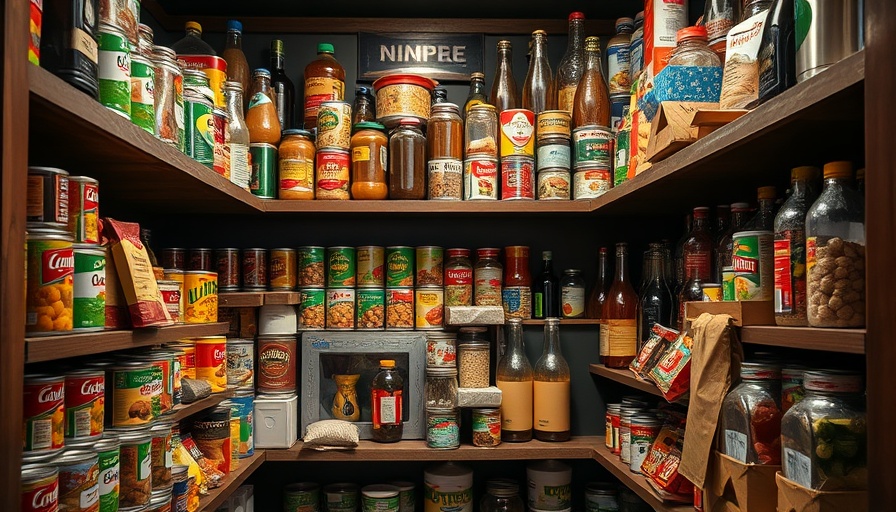
Why Decluttering Your Pantry Matters
A well-organized pantry can set the tone for a smooth-running kitchen. Understanding what items can clutter your shelving helps in promoting not just a clean space, but also safety and efficiency. Storing the wrong items may result in spoilage, waste, and more importantly, safety hazards in your home, especially if you have children. Let’s discover the 15 items that should find new homes outside your pantry!
Medical Safety: Keep Your Pantry Child-Proof
First on the list is medicine. The pantry often serves as an accessible place for many families, which can be dangerous for children if medications are stored within reach. This includes over-the-counter pain relievers, prescriptions, vitamins, and supplements. Opt for secure storage options in a cupboard that’s high out of reach or in a dedicated medicine cabinet to ensure safety for little ones.
Meat and Dairy: A Recipe for Disaster
Never store fresh meat in the pantry. The risk of spoilage is high, and improperly stored meat can lead to serious health issues. The same goes for eggs and dairy products. These items require refrigeration to maintain freshness and safety, so keep them far from the pantry shelves.
Understanding Perishables: Fruits and Vegetables
While certain root vegetables can tolerate a pantry environment, most others should be refrigerated. Store fruits and perishables in colored mesh bags or see-through containers in the fridge to prolong freshness and reduce pest attraction. Always take time to consider where each piece of produce is stored.
Cleaning Supplies and Non-Food Items: A Dangerous Mix
Another crucial category includes hazardous items. While it may be convenient to store cleaning supplies in close proximity to food, chemicals should never be stored near any edible items, not even in sealed containers. Moreover, your pantry is not the place for non-food items like lightbulbs, tools, or electronics, which only serve to clutter your space.
Rotating Food: Say Goodbye to Expired Goods
Expired items pose a significant problem. Not only do they waste valuable pantry space, but they also contribute to food waste. It’s essential to regularly assess your pantry contents and remove anything that’s expired or stale. Unsealed packages can similarly attract bugs, making a weekly check a good practice.
Sealed and Airtight Containers: Your Pantry's Best Friend
To protect your spices and dry goods, invest in airtight containers whenever you open a bag or packet. Storing whole grains and spices in a stable environment prolongs their shelf life and enhances flavor without attracting pests. As a bonus, this also creates a visually appealing pantry shelf.
Storing Towels and Fabrics: Avoiding Infestation
Though it’s tempting to tuck away dish towels or linens within your pantry, you risk attracting moths or other pests. Instead, consider designating another area of your kitchen for fabric items to maintain the pantry's core purpose: food storage.
Space Management: Making Room for What Matters
It’s important to alleviate your pantry from the burden of unused kitchen gadgets or appliances with cords. Excess clutter makes it harder to locate food items quickly. Clear out old appliances that haven’t seen use in months and ensure that everything you keep is functional.
Engaging Solutions for a Well-Organized Pantry
Beyond the foundational reasons for pantry organization lies the value of creating a space that works for you. By regularly assessing your pantry contents and eliminating unnecessary items, you empower yourself to effectively manage and thrive in your cooking space.
Next time you open your pantry door, take a moment to reflect on how well-organized it is for your family’s needs. A functional space not only enhances safety but can ease the stress of meal preparation!
In summary, a clean pantry is not just about aesthetics; it is about creating a safe, efficient environment that allows you to focus on what really matters—nourishing yourself and your family.
 Add Row
Add Row  Add
Add 



 Add Row
Add Row  Add
Add 
Write A Comment